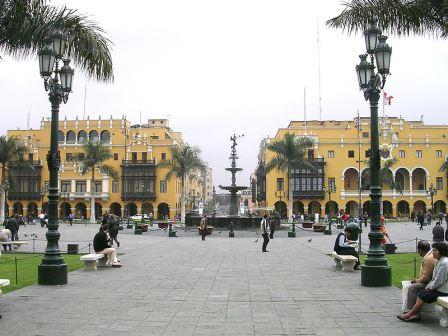Lima Peru – A Cultural Goldmine
Lima Peru may be a desert city but there is nothing dry or scorched about this sprawling valley overlooking the Pacific Ocean.
It is a loud and gritty place covered, just like in most Central American countries. However Lima is often covered by a layer of fog.
Many tourists will prefer to use Lima as a springboard to more peaceful destinations in the Andes.

However, if you stay long enough to peel back the city’s layers, you will be awarded with a vacation filled with culture, nightlife and literary experience.
Lima is a city that mixes its ancient roots with modern conveniences. Condominium high rises stand beside glorious pre-Columbian temples.
Old colonial mansions with impressive Moorish-style balconies and Baroque churches decorated with the skulls of its patron saints now sit side by side with sleek, ultramodern structures built by the city’s most creative. This is a side of Peru you can’t see anywhere else in the Andean region.

Geography
Metropolitan Lima has an area of 1,031.77 sq. miles, 318.87 sq mi. or 31% comprise the actual city and the remaining 69% the city outskirts. Lima Peru is the second largest city in the world located in a desert, after Cairo, Egypt.
The city slopes gently from the shores of the Pacific Ocean into valleys and mountain slopes located as high as 1,600 ft above sea level. The urban area of Lima covers about 310 sq. miles. It is located on mostly flat terrain in the Peruvian coastal plain, within the valleys of the Chillón, Rímac and Lurín rivers. The city center is located about 9 miles inland at the shore of the Rímac River, which is a vital resource for the city.

Climate
Lima’s climate is mild, despite being located in the tropics and in a desert. Although classified as subtropical, Lima’s proximity to the cool waters of the Pacific Ocean leads to temperatures much cooler than those expected for a subtropical desert. It is neither cold nor very hot.
Summers are warm, humid, and sunny. Daily temperatures oscillate between lows 64 °F to 72 °F, and highs of 75 °F to 84 °F. Winter weather is dramatically different. Gray skies, breezy conditions, high humidity and cool temperatures are common.
Week long stretches of dark overcast skies are not uncommon. Winter temperatures in Lima do not vary much between day and night.

Overview of the Historic Centre of Lima. By Martin St-Amant, License CC-SA-3.0
Lima’s Arts and Culture
Just like the city itself, Lima’s art scene is a combination of old and new. Elegant museums featuring the city’s collection of superb centuries-old pottery also showcase edgy pieces mounted on different multimedia installations.
It is also noteworthy that local people visit both types of art exhibits, a testament to the people’s deep appreciation for beauty in whatever form or age.
Traditional Catholic devotees still celebrate religious holidays with processions and other solemn rituals just like they did in the 18th century. Children learn about these rituals at a young age.
They continue the tradition into their adult years but they also crowd into nightclubs to have drinks and dance to modern songs.

Eating Your Way around Lima
Lima’s climate is perfect for tropical fruits like mangoes and cherimoyas. The varieties you find here are exceptional – one bite releases into your mouth a burst of sweet delicious juice.
Fruits here are often ripened in the sun and are picked at the source so you get the freshest fruit. That’s something that’s hard to find in the States unless you live on or near a farm.
Once you taste these delicious fruits it will be hard to return to the grocery-bought produce in your supermarket back home.

Historic Centre of Lima. Photo by Dozenist, License CC-SA-3.0.
Sit back and relax with a pisco sour, Lima’s signature drink. This drink is made with limones, a small, tart lime that gives the drink its signature scent and taste.
Much like the way kaffir limes give Thai food that distinct citrusy flavor. These drinks can pack a punch and go perfectly well with locally sourced langostinos or large shrimps.
What is Peru without potato dishes? Potatoes are native to the Andes so it is almost too easy to assume that Peru will fulfill all your potato cravings.
Have it mashed with lemon and salt spiked with the ubiquitous aji pepper. This starchy concoction is filled with crab, avocado, boiled egg and freshly cooked shrimp and octopus.
Seafood is at the very heart of Peruvian cuisine. The seafood here is fresh from the depths of the Pacific Ocean.
The token seafood dish of Lima is the ceviche – raw, sliced fish cooked by the acidity of lime juice. Another is the tiradito, which uses fresh, raw sole or corvine, a native fish.
The flesh is sliced thinly and dressed with a fiery aji pepper and rocoto sauce. If you are a seafood lover then Lima will satisfy your seafood thirst.
Take your time discovering Lima. There are lots of things to do and see. Beyond the gray fog lies a mess of cultural, culinary and historical delights, yours for the asking.
About the Author
Charles is selling most of his valuable domain names.


